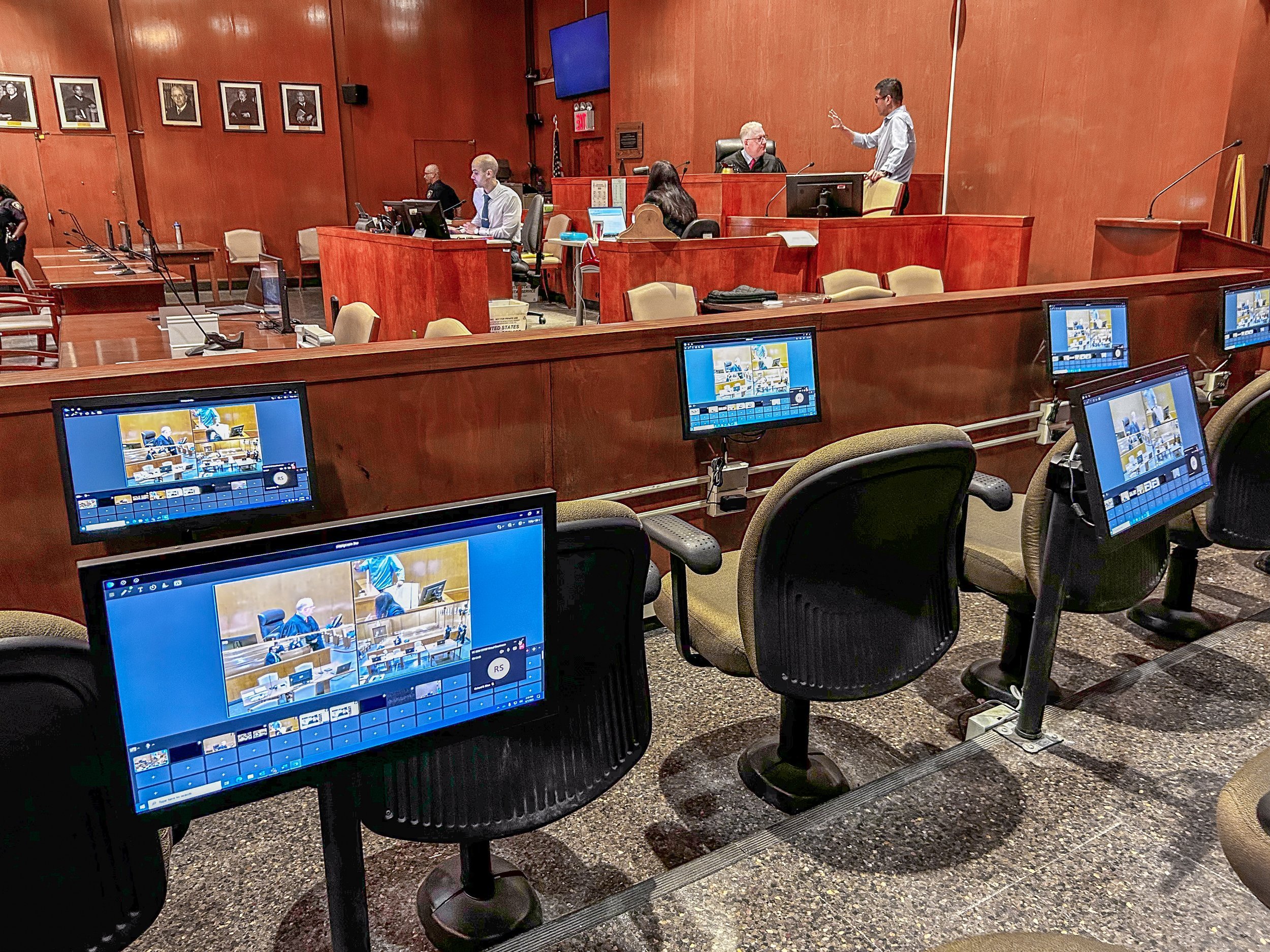Legal aid organizations still lack up-to-date tech, new report finds
/A new report from the Commission on Access to Justice says current funding to legal aid services is not keeping up with technology demands.Eagle file photo by David Handschuh
By Noah Powelson
Current technological funding and investments for legal aid services is still insufficient despite years of increased spending, a new report from the NY Commission on Access to Justice says.
The 2025 Technology Report was released by Chief Judge Rowan Wilson’s Permanent Commission on Access to Justice on Wednesday, calling for further funding for legal services providers to boost much needed technological resources. The report found that while technology spending has increased since 2018, it has not kept pace with the growing technological needs of legal organizations and their clients.
According to the report, the median tech budget for legal aid organizations is $162,842, a 100 percent increase since 2018. However, spending has also decreased as a percentage of overall
operating budgets, dropping from 2.25 percent to 1.99 percent.
Legal aid organizations with smaller budgets also allocate a higher percentage of their budgets to technology than their larger counterparts. These organizations were especially reliant on external consultants for their technology needs, nearly 73 percent reported having less than one full-time technology employee, and 47 percent have none at all.
The report was developed from a series of three surveys that took place in 2018, 2021 and 2023 assessing the technological needs of New York state services organizations delivering civil legal services to low-income New Yorkers in housing, healthcare and other essential matters. A noticeable shift in technological needs rose during the COVID-19 pandemic as courthouses and legal organizations moved to hybrid and remote work models.
According to the report, 83 percent of surveyed organizations now operate in a hybrid format, and with that comes additional costs to acquire sufficient laptops, home office equipment and infrastructure. As legal entities become increasingly reliant on technology, proper technological funding will play a crucial role in getting New Yorkers access to legal services.
According to the report, 71 percent of organizations who responded to the survey said their clients lacked internet access, and 67 percent said they lacked access to computers or smartphones.
“In 2021, 92 percent of civil legal needs of low-income Americans went unaddressed, and the survey highlights the critical role that technology can play in addressing those unmet legal needs,” the report read.
The report makes several recommendations to address technological holes in New York legal service organizations, chief among them being increasing funding for cybersecurity and cloud-based infrastructure investment.
“In 2018, most organizations reported that they had moved their core services, including case management systems and document storage, to the cloud,” the report reads. “In 2023… More than half of organizations (51 percent) have some information stored in servers on site. Most organizations use a contractor or consultant to maintain those servers (54 percent), while 41 percent use in-house technology staff.”
Organizations who responded to the survey commonly said the costs, labor and maintenance to move their legacy data onto a cloud-based server made it prohibitively expensive. Fifteen percent of organizations said they also had concerns about switching to the cloud, and 11 percent said they had not found a cloud-based service suitable for their data needs.
The pandemic not only increased the technological needs of the legal organizations, but increased cybersecurity threats as well.
The shift to hybrid and remote saw sweeping implementation of now commonplace cybersecurity measures. Multifactor verification, for example, was only implemented by 34 percent of organizations prior to the pandemic, according to the report. Now, roughly 84 percent of organizations use MFA, and 80 percent have implemented advanced mail security features.
There are still holes in the organizations’ cybersecurity, however, and insufficient funding leads to a lack of security.
Around 38 percent of organizations do not have network segmentation, the practice of dividing a computer network into smaller parts for performance and security. Nine percent of organizations do not have staff use MFA, 8 percent said they don’t have any advanced mail security features and 9 percent said they don’t have firewalls.
While cybersecurity has increased significantly in legal organizations since the pandemic, these holes represent significant threats to attorneys and clients alike. Organizations said the biggest cybersecurity threat is phishing attacks, a scam that involves sending a fake email or data with malware installed that steals sensitive information.
Twenty percent of organizations also reported a lack of necessary cybersecurity resources due to insufficient funding. Staff negligence or mistakes also play a huge cybersecurity risk for 20 percent of organizations, but only 52 percent of organizations said they required staff to have general training on fundamental cybersecurity practices, such as MFA, password management and the risks of public Wi-Fi usage.
“Overwhelmingly, organizations report that the primary obstacle to obtaining and implementing new technology is a lack of funding,” the report reads. “Most organizations (74 percent) also identify time constraints and staff resources as challenges.
The report lays out other key areas legal organizations need further technological development, such as ongoing hardware upgrades, new case management systems and website enhancements. The need for technological funding for organizations who serve low-income clients is especially crucial, as those clients frequently lack technological access.
“This report highlights the crucial role of technology in providing civil legal aid, with a focus on cybersecurity, remote work capabilities, and improvement of client access through online systems—all of which require investments that legal services providers cannot afford without additional funding,” Wilson said. “A primary goal of the Permanent Commission’s report is to detail the needs and recommendations to a broader funder community, with the aim of enabling providers, through the incorporation of current technology, to deliver legal services to their clients efficiently and effectively in matters involving the very basics of life.”




